#Expert power
Text
Types of Power
Power can manifest in various forms, each influencing individuals and societies in distinct ways. Here are some different types of power:
Coercive Power: Coercive power involves the ability to force compliance or obedience through threats, punishment, or use of force. It relies on fear of negative consequences and is often associated with authoritarian regimes, law enforcement, or military institutions.
Reward Power: Reward power stems from the ability to provide incentives, rewards, or benefits in exchange for compliance or desired behavior. It can involve material rewards such as money, promotions, or privileges, as well as social rewards like praise or recognition.
Legitimate Power: Legitimate power is based on recognized authority, formal roles, or institutional positions within society. It derives from social norms, traditions, or legal structures that confer authority to certain individuals or institutions, such as elected officials, government leaders, or religious figures.
Referent Power: Referent power arises from the attractiveness, charisma, or perceived likability of an individual or group. It is rooted in admiration, identification, or emotional connection with a person or group, leading others to voluntarily align with their values, beliefs, or goals.
Expert Power: Expert power comes from possessing specialized knowledge, skills, or expertise in a particular domain. Individuals or groups with expert power are perceived as credible, trustworthy, and competent, enabling them to influence others through their expertise and insights.
Informational Power: Informational power derives from controlling access to valuable information or resources. Those who possess information that others need or desire can wield influence by selectively sharing or withholding information, shaping perceptions, or guiding decision-making processes.
Connection Power: Connection power is based on social networks, relationships, or alliances with influential individuals or groups. Those who have extensive social connections, networks, or alliances can leverage their relationships to access resources, opportunities, or support, enhancing their influence and status.
Resource Power: Resource power involves control or ownership of valuable resources, assets, or material wealth. Individuals, organizations, or institutions that possess significant resources, such as financial capital, land, or technology, have the ability to influence others through control over vital resources.
Symbolic Power: Symbolic power arises from the ability to shape meanings, values, or cultural norms within society. It is associated with influential figures, institutions, or ideologies that shape collective beliefs, identities, or symbols, influencing how individuals perceive themselves and their social reality.
Relational Power: Relational power emerges from interpersonal relationships, dynamics, or interactions between individuals or groups. It involves the ability to negotiate, persuade, or influence others through communication, trust-building, or emotional connections within social contexts.
These different types of power interact and intersect in complex ways, shaping social hierarchies, organizational dynamics, and individual behaviors within societies.
#philosophy#epistemology#knowledge#learning#chatgpt#education#metaphysics#ethics#psychology#sociology#society#culture#power#Coercive power#Reward power#Legitimate power#Referent power#Expert power#Informational power#Connection power#Resource power#Symbolic power#Relational power
3 notes
·
View notes
Text
Mech pilot system where there's three pilots???
One for the left hemisphere, one for the right hemisphere, and one for the cerebellum?
Like, you all still have to be drift compatible, you all still have to be in the cockpit together, but there's basically two thinkers and one translator.
Imagine that the mech designers fought this for years. Two humans every time with massive neural network loads on both the machine and the humans. Pilots could only be medically cleared to operate a machine for four years, max, and then their careers were over. Most didn't make it even that long.
And then someone figures out that if you put in another human to translate between the humans and mech, it flows so much smoother.
Two pilots in the front, the ones doing the strategy and the martial arts and the orders and the takedowns. A third in the back, suspended and all but fugue as they relay human-to-mech and mech-to-human, a person turned into a slave drive, but still tangled up into everybody's heads.
Like, imagine the possibilities?!
You walk into the chow hall and the people who are interested in the shiny new pilots want to know if you're a Leftie or a Migi or a Cera.
Lefties and Migis who spent too long in the cockpit that day who feel like they can't think clearly without that little voice in the back of their head whispering the answers.
Ceras who space out when the room gets loud, who accidentally expect someone else to say what they're thinking, who have nerve damage all across their bodies because it takes all they have to sort data.
Mechs who are older than the trio structure who had their cockpits gutted and refitted, who have spaghetti running up to the chunk of metal that is the third pilot's seat, like a spare part slapped into the room and given too much control.
A Cera who hangs out in the mech bay because the humans are too far from them anymore, but the mecha can't talk to them, either.
a Leftie who can't stand being in the same room as their Migi without the Cera to talk between them.
A Migi who barely knows how to be their own person anymore because so much of their brain is just outside of their reach.
A mech that just wants things to go back to the way they were, pain and lag be damned.
#mechs#mecha#prompt#writing prompt#writeblr#this is an idea for sure#you guys I wanna write a mech something so much#but I just don't have the brain power#*groooaaan*#it's so cool#I've barely even seen any mech animes but I just think this is so dang cool#(most of my mech experience is Pacific Rim)#(and the last thing I saw besides that was Knights of Sidonia)#(so yeah you can see that I am not an expert in this field)#(but the vibes are immaculate)#🕸️
481 notes
·
View notes
Text




How To Make Full Use of Networking Events
Networking events and conferences are great because you get to meet and learn from experts but also connect with peers. I recently attended one and I wanted to share things I wish I had done before and what I learned.
1. Define an Objective
You have to determine why exactly you want to go to the event. Are you looking for a career change? A job? Advice on how to be better at your current job? How to tackle some issues in your start up? Networking? Make a list of the reasons.
2. Research
You need to research the speakers extensively. Go over their Wikipedias, LinkedIns and other social medias. Read their company websites from top to bottom. If they’ve released a book, take a look at the summary and read the reviews. Read some of their published articles.
Take this time to prepare at least 3 questions per speaker. Try to make at unique and interesting as possible, don’t ask the usual generic ones.
3. Business Cards
Definitely carry business cards. Make sure that your email, LinkedIn is mentioned clearly. Even if you work at a different company, that doesn’t matter- show your job title on the business card. Better yet, ask your HR if they can give you business cards as you would be promoting their company through your event. If you’re a student, I’d recommend you make a portfolio website of your internships/ project/ past work/ volunteer work/ hobbies/ interests.
4. Actually Talking
During the event, don’t be shy to ask questions. It doesn’t matter whether the rest of the audience thinks they’re stupid. You have spent your money to come there for your gain. Make full use of it. Ask questions. Meet the speaker after the event. Thank them for the insight, introduce yourself, ask them questions related to your objective of coming to the conference. Exchange business cards.
5. Utilising Coffee Breaks
Coffee and lunch breaks are a great way to talk to people. You may feel shy or awkward to talk to new people, but there’s very high chances that they feel the same way. You can start off by asking someone how they heard about the event, what they thought of the speaker, or pass a remark on the question they asked the speaker. Keep in mind that if the event has multiple speakers, there could be a chance that you’re talking to a speaker, even if you don’t recognise them… so be on your best behaviour.
6. Questions
Ask questions that are beneficial to you. During my conference, we had a women-leaders panel. An audience member asked the speakers how they divided their work between family and work. The speakers looked visibly annoyed at the question - because how generic is that?
Ask questions that could help you grow. If you’re in marketing, ask about their tried and tested marketing strategies. If you’re an early stage founder, ask them how they sourced their VC. If you’re struggling with time management, ask the speakers how they manage. Ask the questions for YOUR own benefit.
You can ask difficult questions but make sure you do it respectfully and tactfully. Best to start with a compliment and then ease into the question.
7. Dressing
Business casual, unless mentioned otherwise. What this means: blazer/ jackets/ trousers/ pencil skirts/ shirt/ co-ord sets/ no sneakers.
It doesn’t matter what other people wear. The way you present yourself is your brand. It also shows the respect you have for the other person - you respect them enough to not come shabbily dressed.
#c suite#powerful woman#ceo aesthetic#personal growth#that girl#productivity#strong women#getting your life together#feminine energy#balance#networking#conferences#how to network#connect#how to connect#speakers#business#entrepreneurship#experts#connections#LinkedIn#questions#socialise#socialising#public events#boost your cv#resume#skills#adulting
1K notes
·
View notes
Text
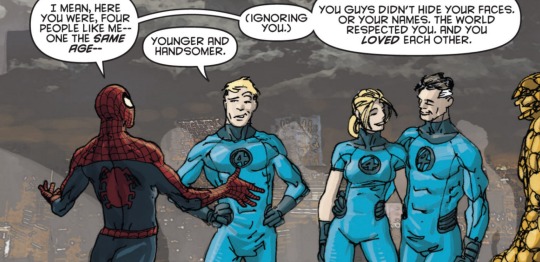
spider-man and the fantastic four #4
#doubly funny because I’m pretty sure Johnny is canonically older than Pete by like a few months to a year#sci talks comics#at least that seems to be the general consensus in fanon but I actually don’t know if it’s based on anything in canon#save for the fact that Johnny got his powers before peter does. does that mean anything? hey comic nerd side of tumblr#do we know if Johnny is canonically older. I need experts on this immediately.#I think I’ll always hc Johnny as older it feels right.#it’s also another thing for peter to be slightly mad about for no real reason.
175 notes
·
View notes
Text
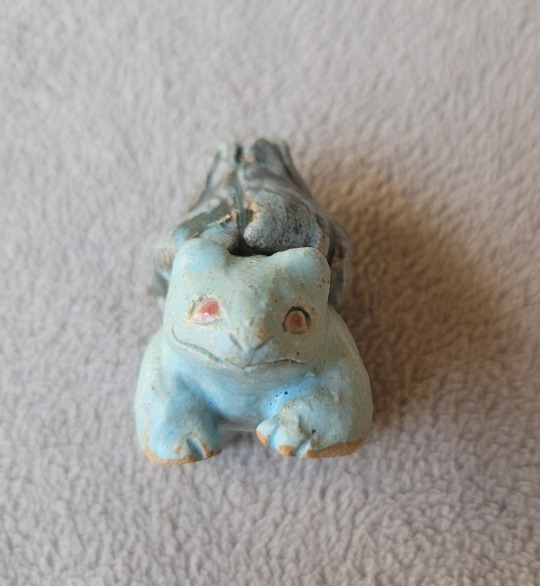

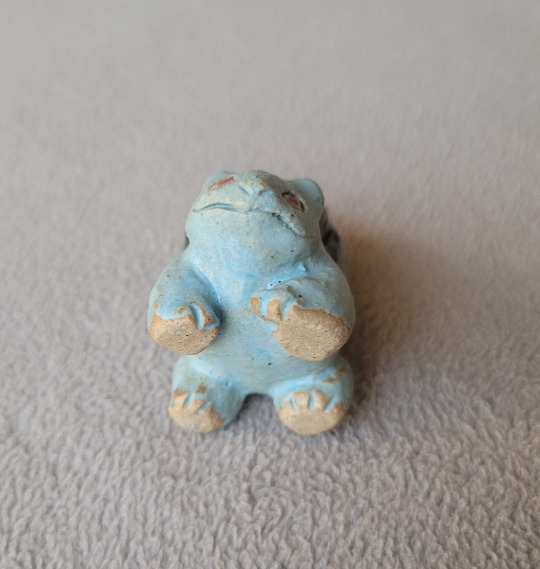
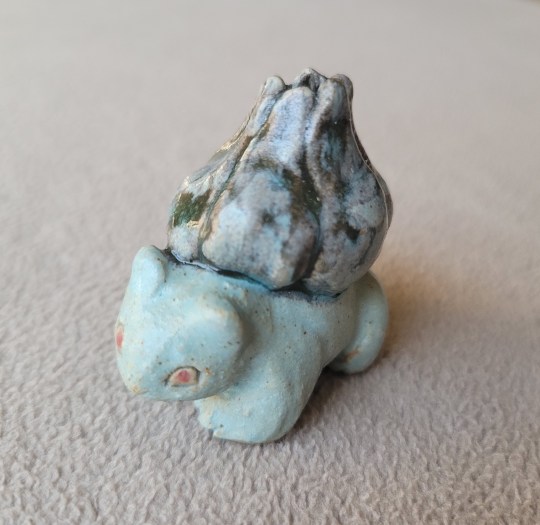
Bulbasaur!
image descriptions: a little ceramic Bulbasaur in wintery blue with a green bulb and red eyes. It has a friendly smile.
#my favorite pokemon :}#I like the lil turtle dude what can I say#the ninetails one and eevee were runner-ups#got all my pokemon knowledge from a poster my uncle left in the basement. as such I consider myself an expert (joke)#ceramics#ceramic sculpture#bulbasaur#bulbasaur sculpture#sold#it got sold to my ceramics professor in the art sale!! she's about 70 so I was surprised she chose the bulbasaur lol#but hey more power to her
63 notes
·
View notes
Text
Hello ranger’s apprentice fandom can we talk real quick about the stupidest thing Flanagan ever wrote
It’s about the bows. Yanno, the rangers’ Iconique™️ main weapon. That one. You know the one.
Flanagan. Flanagan why are your rangers using longbows.
“uh well recurve arrows drop faster” BUT DO THEY. FLANAGAN. DO THEY.
the answer is no they don’t. Compared to a MODERN, COMPOUND (aka cheating) bow, yes, but compared to a longbow? Y’know, what the rangers use in canon? Yeah no a recurve actually has a FLATTER trajectory. It drops LATER.
This from an article comparing the two:
“Both a longbow and a recurve bow, when equipped with the right arrow and broadhead combination, are capable of taking down big game animals. Afterall, hunters have been doing it for centuries with both types of bows.
However, generally speaking and all things equal, a recurve bow will offer more arrow speed, creating a flatter flight trajectory and retain more kinetic energy at impact.
The archers draw length, along with the weight of the arrow also affect speed and kinetic energy. However, the curved design of the limbs on a recurve adds to its output of force.”
It doesn’t actually mention ANY distance in range! And this is from a resource for bow hunting, which, presumably, WOULD CARE ABOUT THAT SORT OF THING!
Okay so that’s just. That’s just the first thing.
The MAIN thing is that even accounting for “hur dur recurves drop faster” LONGBOWS ARE STILL THE STUPID OPTION.
Longbows, particularly and especially ENGLISH longbows, are—as their name suggests—very long. English longbows in particular are often as tall or taller than their wielder even while strung, but especially when unstrung. An unstrung longbow is a very long and expensive stick, one that will GLADLY entangle itself in nearby trees, other people’s clothes, and any doorway you’re passing through.
And yes, there are shorter longbows, but at that point if you’re shortening your longbow, just get a goddamn recurve. And Flanagan makes a point to compare his rangers’ bows to the Very Long English Longbow.
Oh, do you know how the Very Long English Longbow was mostly historically militarily used? BY ON-FOOT ARCHER UNITS. Do you know what they’re TERRIBLE for? MOUNTED ARCHERY.
Trust me. Go look up right now “mounted archery longbow.” You’ll find MAYBE one or two pictures of some guy on a horse struggling with a big stick; mostly you will actually see either mounted archers with RECURVES, or comparisons of Roman longbow archers to Mongolian horse archers (which are neat, can’t lie, I love comparing archery styles like that).
Anyway. Why are longbows terrible for mounted archery? Because they’re so damn long. Think about it: imagine you’re on a horse. You’re straddling a beast that can think for itself and moves at your command, but ultimately independently of you; if you’re both well-trained enough, you’re barely paying attention to your horse except to give it commands. And you have a bow in your hands. If your target is close enough to you that you know, from years of shooting experience, you will need to actually angle your bow down to hit it because of your equine height advantage, guess what? If you have a longbow, YOU CAN’T! YOUR HORSE IS IN THE WAY BECAUSE YOUR BOW IS TOO LONG! Worse, it’s probably going to get in the general area of your horse’s shoulder or legs, aka moving parts, which WILL injure your horse AND your bow and leave you fresh out of both a getaway vehicle and a ranged weapon. It’s stupid. Don’t do it.
A recurve, on the other hand, is short. It was literally made for horse archers. You have SO much range of motion with a recurve on horseback; and if you’re REALLY good, you know how to give yourself even more, with techniques like Jamarkee, a Turkish technique where you LITERALLY CAN AIM BACKWARDS.
For your viewing enjoyment, Serena Lynn of Texas demonstrating Jamarkee:
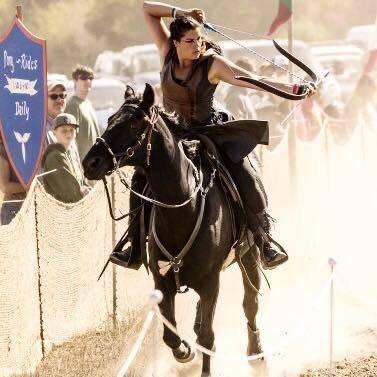
Yes, that’s real! This type of draw style is INCREDIBLY versatile: you can shoot backwards on horseback, straight down from a parapet or sally port without exposing yourself as a target, or from low to the ground to keep stealthy without banging your bow against the ground. And, while I’m sure you could attempt it with a longbow, I wouldn’t recommend it: a recurve’s smaller size makes it far more maneuverable up and over your head to actually get it into position for a Jamarkee shot.
A recurve just makes so much more SENSE. It’s not a baby bow! It’s not the longbow’s lesser cousin! It’s a COMPLETELY different instrument made to be used in a completely different context! For the rangers of Araluen, who put soooo much stock in being stealthy and their strong bonds with their horses, a recurve is the perfect fit! It’s small and easily transportable, it’s more maneuverable in combat and especially on horseback, it offers more power than a longbow of the same draw weight—really, truly, the only advantage in this case that a longbow has over the recurve is that longbows are quicker and easier to make. But we KNOW the rangers don’t care about that, their KNIVES use a forging technique (folding) that takes several times as long as standard Araluen forging practices at the time!
Okay.
Okay I think I’m done. For now.
#to be VERY clear. I Am Not An Actual Expert.#i AM however drawing from my own experience and research#and literally i can find Zero literature about recurve arrow flights dropping faster than longbows#all i could find was that recurve range is worse compared to compound bows#which. OBVIOUSLY. compound bows CHEAT.#(said lovingly. ish. if you use a compound more power to you but also It’s Doing All The Work For You.)#this article was literally all i could find from a couple hours’ search comparing recurves and longbows#anyway recurves are cool. flanagan why did you do recurves so dirty.#for that matter why are all your women blonde.#(i’m not including brotherband here sorry)#(but also why did it take a spinoff series for him to create a named female character that wasn’t a blonde)#(flanagan explain)#god these books have so many problems. truly this is my ‘i could fix him’#thank you flanagan for getting me into this special interest. now Tell Me Why You Did It Wrong.#rangers apprentice#anyway if you REALLY want to read about some bangin historical horse archers#look up the parthians :)#specifically how they fucking Decimated an entire roman contingent :)#crassus getting absolutely demolished by mounted archer parthians is definitely my favorite bit of roman trivia
74 notes
·
View notes
Text
Been watching Breaking Bad little by little lately. Why do Walter White and Gale Boetticher read as the most dramatic slowburn ever with the little screen time they have together. wtf. was that just me seeing that? this is my destiel.
#bheart talks#two chemistry experts who are capable of so much but never get the chance to flex their intelligence#somehow finding themselves in this predicament#walt struggling to find some kind of power in it all and frustrated constantly that no one keeps up with him#gale can keep up with him and they have something to talk about and bond over and everything#finally two men who can actually relate to something. anything.#that chemically pure coffee they have#gale reciting poetry by memory to walt#the slowness of that scene#the admiration gale has for walt and his work#the dedication to walt he has in his notebook referencing that poem#hey like who the fuck wrote this and why do we only get like three episodes max of this i think gale boetticher could've fixed walter white#brba#breaking bad
80 notes
·
View notes
Text
Going off my last post about Jay's lightning powers having the potential to be broken, I was looking into what lightning/electricity powers could entail, and I stopped to consider whether that could involve electromagnetism since it is technically involving electricity but ultimately decided against it since that felt like too much of a stretch
But then I looked at the list of lightning abilities on the Ninjago wiki and umm

IS THIS IMPLYING THAT THE MASTERS OF LIGHTNING CAN POTENTIALLY MANIPULATE THE ELECTROMAGNETIC FIELD?
I'm not an expert on this sort of thing but... isn't electromagnetism the second strongest force to exist? Like it's insanely more powerful than the force of gravity and is responsible for a bunch of stuff like light waves/x-rays/gamma rays? Isn't it responsible for electrons binding to protons/neutrons via whatever form of like static electricity?
#like did they actually stop to consider what the implications of giving jay the ability of electromagnetism#ninjago#ninjago jay#jay walker#again i'm not an expert on this#but that feels... too broken#if jay has the power of electromagnetism there is no fucking contest for him being the strongest#it was hardly a contest with just lightning and electrical currents#but this feels awful it feels unfair#i still think lloyd is stronger than jay#but the power gap between jay and the person behind him just got way bigger than i thought
41 notes
·
View notes
Text



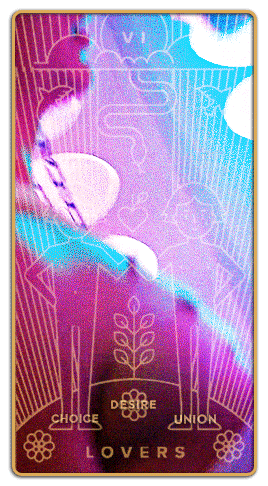

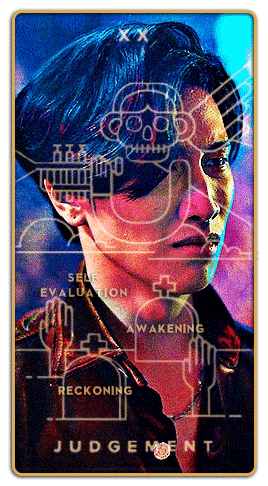

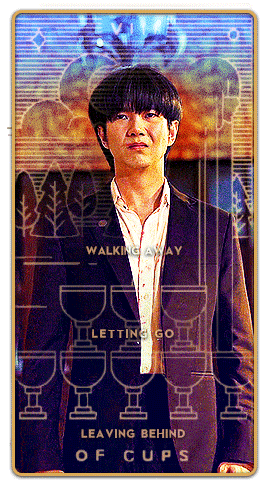
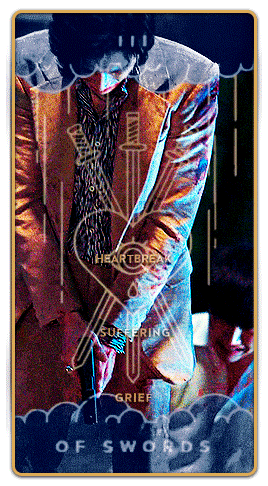
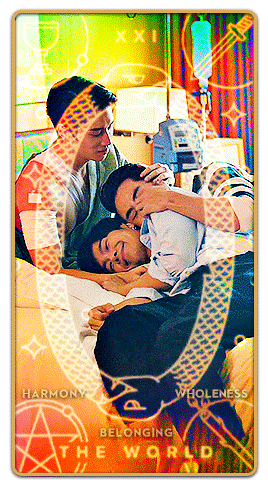
vegaspete: tarot edition
#kinnporsche#kinnporsche the series#vegaspete#pete x vegas#vpedit#i’m no tarot expert but i was expecting their spread to be wands & cups heavy but swords are absolutely dominating#their entire story could probably be represented by swords which actually tracks:#the swords are all about power extremes change & conflict#anygay- it. is. FINISHED#tonanons#todramaism#usernuria#tosnimeat#userspicy#tusersilence#biblebuild#asiandramanet#asianlgbtqdramas#kinnporsche*
682 notes
·
View notes
Text

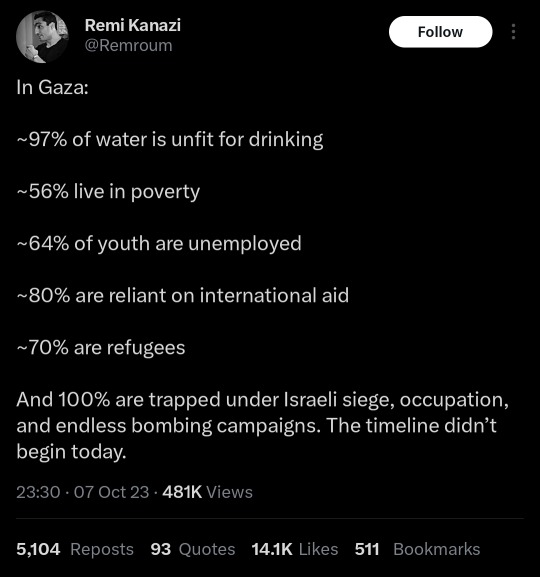
#so many eXpErTs acting like things started yesterday....#also yet another moment to consider why america so desperately wants the world to hate certain countries and support others#all the ostracized countries countries in the world have only one thing in common: they don't act like America's puppets and slaves#no it's not the negative bs you are fed about them#your own country does far worse than them#i am especially surprised at Ukrainians#first it was never possible to take your president seriously when he always a#always acted so innocent but was blatantly working with the US to ensure you people stayed at war and suffered#do you support him? ever considered how America might have put him in power?#or is this the first time you're having to deal with America?#ukraine#russia#palestine#israel
89 notes
·
View notes
Text
You know what's sad? Because western discourse is shaped by the post-vietnam* attitude towards war and soldiers, his torturous death will have meant nothing for these people. Sure, most westerners feel bad about deaths of Ukrainian civilians, especially children - you have to be a real reptilebrain not to - but when it comes to our soldiers, it's almost as you think that brutal torture comes with the territory. Or maybe it's the poisonous effort of articles slandering Azov, and now people think that the entirety of ZSU is made up of literal ww2 nazis... 😓 I just know that every time our civilians get massively killed, we manage to convince our western partners to send us more weapons. It's like a bloody requisite for the fucking application. But our soldiers? Idk. Why do you think people lose their humanity once they put on the uniform? They defend our homes, they are literally the only reason all of us, myself included, are alive today... Only to feel even more pain, all this pain...
Спочивай, брате
#*maybe not vietnam maybe bush is more relevant#i'm not an expert in american history#obviously this is not about all westerners. but a concerningly big segment#and concerningly many of them are in positions of power#''I'm pro Ukraine but...''
164 notes
·
View notes
Text
I keep thinking abt Zoruru and Taruru's potential as a comedic duo. Yall don't understand how funny but also potentially emotionally investing I think they are. Like on one hand we got this kid fresh out of training with hopes and dreams to achieve, already at a good point in his career because hey, he got accepted into one of the most elite platoons their army has to offer! What more could a guy like him possibly ask for? And on the other we have an old man who at this point is completely disillusioned with the Keron Army, never wanted to find anything worthwhile there to begin with -- he only joined to go after his true objective. He's not moved by ambition, but rather revenge.
Their personalities are the polar opposite of each other which you'd think would cause them to clash. There's teasing, playful banter (from Taruru) and half hearted threats (from Zoruru), but in spite of that they get along surprisingly well. That's because they have one thing in common: neither wants to be put aside. They both want to make something of themselves. They want to be recognised; Zoruru, by those who wronged him, and Taruru, by... everyone. He might be not exactly sure, but he wants people to recognise his worth. In that process, they both train hard to work towards that goal. Maybe together, maybe separately, but the idea is that they both end up doing exactly that: they acknowledge the other's abilities. And later, each other. As people.
They both get exactly what they need out of this unlikely bond. Taruru finds someone who recognises him as being apart from the crowd ("not a background character", as he put it in the GRR platoon arc), and Zoruru finds what he's always looked for, even though he might have forgotten it along the way: a genuine friend. Taruru gets the older keronian to loosen up, if minimally, while Zoruru reminds the younger one to not place his trust in a single life path.
They're not just great comrades, they're genuinely good for each other.
#sgt frog#keroro gunso#zoruru#taruru#garuru platoon#zoruru sgt frog#taruru sgt frog#{i think bitter old man + nice kid he adopted is a very real and powerful dynamic#this is my view of it anyway#this dynamic idea has been in my mind for literal years i would LOVE to expand on it given the chance#i think tororo can also be thrown here for EXTRA ENJOYMENT#i love the trio but these two specifically got me thinking tonight#i can see zoruru projecting his younger self on taruru a bit because he too wasn't a prodigy... he gets how taruru feels#and likewise taruru understands why zoruru is the way he is. its kinda like... a mutual understanding of each othed that no other member of#the platoon can really understand. cus garuru and tororo are both prodigies and pururu is also an expert of her field#mhhhhhhhhh yes carols put all your brainworms on these two characters that will never actually happen}
16 notes
·
View notes
Text
Hello kids, today I’d like to preach to you about the deep eroticism of The Fight, because warriormale literally lives in my mind and compels me to speak.
When Ram and Bheem wrestle outside the governor’s palace, they are releasing so much sexual energy, it’s actually insane. Hell, even before the wrestling, when they’re exchanging punches, there’s this sizzling tension that they’re both too heartbroken to actually think about, but it comes out subconsciously, in how their bodies react to each other. Bheem takes each punch standing up, then fuckin smacks the shit out of Ram, knocking him to the ground, showing his dominance. Ram whips his head to the side to LEER at Bheem before deciding his next attack.
And what is his next attack? TO CLIMB UP BHEEM’S THIGH and THROW HIM TO THE GROUND so he can MOUNT HIM. Bheem does not kick out of this hold or push Ram’s body away, he ROLLS OVER, TANGLING HIS LEGS with Ram’s, keeping him close. He refuses to go on the defensive, he must stay on the attack, to overpower Ram with the strength of his thighs. This need, this primal masculine aggression, is shared by both men as they continue rolling over each other. It is such an intricate ritual!
They are so deeply, intimately familiar with each other’s bodies. Think of how Bheem yanks open Ram’s legs so he can get right between his thighs. He knows where Ram bends and folds. He’s been here before. Think of how Bheem shoves his hand over Ram’s face to hold him down, covering his lips and nose, feeling his heat and insisting upon his submission. Think of how Bheem LIFTS RAM UP dirty-dancing-style to twirl him around, embraced by his thighs, testosterone spiking like adrenaline.
There’s a raw physicality that is shared between sex and combat that’s difficult to describe to those who don’t feel it. It is so primitive, so base, it defies logic. Ram and Bheem have absolutely no reason to be turned on during this fight. They’re both utterly heartbroken, to a point where they’re basically dying inside. And yet their bodies tingle with desire; the desire to touch, smack, yank, bite, grab, hug, roll, spread, fuck. They can’t help it! That’s why they fight so close and tight, because the magnetism pulling them together is stronger than the betrayal tearing them apart.
Absolutely nobody on this earth can convince me that I’m wrong!
#if there’s one thing I’m an expert on#it’s the way men construct intricate rituals which allow them to touch the skin of other men#I may be a simple lesbian but I used 2 date men and also pretty much all my friends are men#and let me tell you they LOVE COCK more than any str8 woman ever could#and intimate closeness with other men is this insanely powerful subrational DRIVING FORCE in so many masculine interactions#I see it at punk shows and metal shows#I don’t watch sports but I know it’s there too#it’s in military bonding and has been for centuries#this is very much A Thing about men and I love ssraj for including it in RRR#rrr#ram/bheem#rambheem#analysis
37 notes
·
View notes
Text

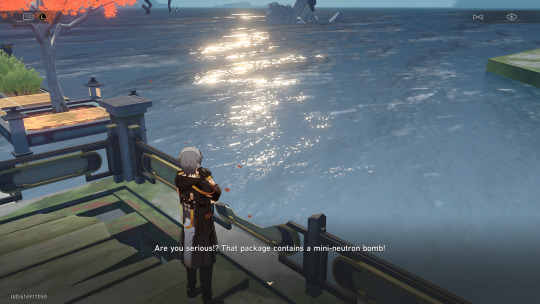
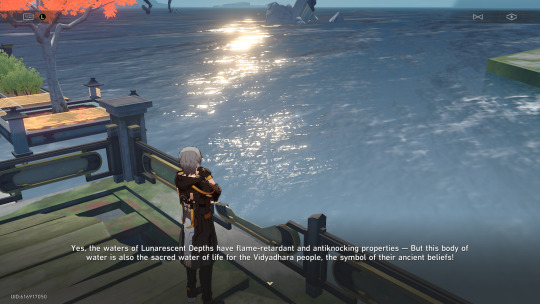

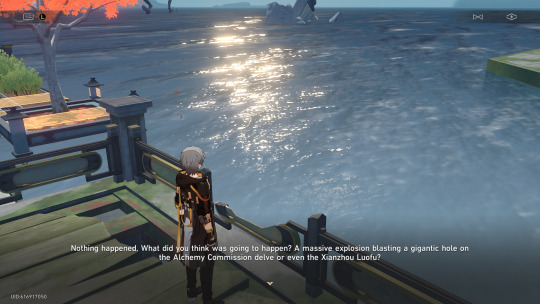


FNAUFNDUa
The fact this fucking achievement unlocked when Caelus made this decision..
What is the higher existence within trying to say here exactly? That believing in these sacred waters is good? Caelus saw the potential in their life giving waters overcoming this death like a reed lost to sea.
That leaving things to chance is a form of free will? This whole interaction is just between him and the Vidyadhara spirits.
#| OOC/IC Musings#| Keepsakes#Listen.. he's an explosives expert#He weighted the risk#Hopefully no high xianzhou powers watched this#-Ahem-#For life must move on
13 notes
·
View notes
Text

Listed below are the "Power Stats" of Series 2 Hex. They have no in-game purpose, only listed on the character cards that came with every Skylander figure until the release of Skylanders: SuperChargers.
Strength: 100
Defense: 90
Agility: 50
Luck: 70
#Skylanders#Undead Skylanders#Core Skylanders#LightCore Skylanders#Seres 2 Skylanders#Female Characters#Playable Characters#Female Skylanders#Cynder Confronts the Weather Wizard Characters#Characters#Expert Skylanders#Elves#Undead Elves#Hex#Lists#Stats#Power Stats
11 notes
·
View notes
Note
Hi again. I'm on some level here to ask for a complete explanation of every aspect of Hawaiian culture that is even tangentially related to your latest fic because I know absolutely nothing and there is the ever present concern that the terms run through cursory Google Translate and internet searching will lose nuance and implications. There were definitely some references to divinities and myths and such that went over my unenlightened head. The story you wove was rich and intricate enough to be held in the mind of someone who knows less than nothing and still have great meaning and truth, but I know that it will mean yet more if I can see the threads you used to make it. (On another level, I'm asking for the explanation because I am abruptly deeply interested in a topic I had previously not thought about very much, and you seem to be significantly more of an expert than the average internet search.)
first off! well first off i am blowing you so many kisses for this very kind ask, thank you so much for giving me an excuse to ramble at (great, great, great) length.
so second off! i would just like to stress that i am very much not an expert in hawaiian language, folklore, history, culture, etc. i am neither kānaka maoli (native hawaiian) nor kamaʻāina (born in hawaiʻi although not necessarily of hawaiian ancestry), and i have not studied these topics formally/in a setting that applies academic rigor. i am an enthusiastic amateur with a personal connection to hawaiian culture, the kind of brain that likes to fixate on areas of interest, and a willingness to scrounge around for reading material. i have, i think, a decent sense of what some of the baseline texts in the field are, and a fairly good bullshit detector (and the understanding/ability to dig into things when i can't rely on the bullshit detector), but ultimately i am a layman and an outsider with corresponding perspectives and biases. i also, i will admit frankly, have a pretty sharp knowledge cutoff corresponding to the time of first european contact, just because of my own personal interests and reading preferences.
read that whole disclaimer? let your eyes glaze over while you skimmed it? good! here's my real quick (lmao) rundown of Sum Things U Should Know If You Wanna Close-Read Kīpuka:
ʻŌlelo Hawaiʻi 101
Good grief when I put it like that I do NOT feel qualified to tell you any of this. Anyway. We can keep it basic just so you can get a sense of the mouthfeel of the words. And just fyi ʻŌlelo Hawaiʻi is the proper name of the language; i'll be using "Hawaiian" as the adjective form, sans ʻokina, assuming an English-speaking readership.
ʻŌlelo Hawaiʻi as it is commonly rendered today has 13 letters: 5 vowels (A, E, I, O, and U) and 7 consonants (H, K, L, M, N, P, W), plus the ʻokina or glottal stop (that little apostrophe-lookin' dude at the beginning of the word ʻokina, also the source of most of my typesetting woes). Pronunciation-wise, there are no silent letters and no though/through/enough-type surprises: every letter is pronounced, and all of the vowel renderings are approximately equivalent to how you'd pronounce them in Spanish or Italian. Hence, the word kuahine = koo-ah-HEE-nay rather than, like, kyoo-ah-highn, which made me feel gross even just typing it out.
The ʻokina is pronounced, and bear with me here, like the dash in the english nuh-uh. or, if you're a try-hard vocalist—reattack the vowel after the ʻokina instead of eliding it to the vowel prior. So the place-name Kaʻū is pronounced ka-OO, as distinct from the word kau which is pronounced more like kow (which is a bit of an oversimplification of the latter word, but I'm trying to be efficient here).
That leads us neatly into the other diacritical marking used in ʻŌlelo Hawaiʻi, the kahakō or macron which helpfully appears in its own name. No worries here; the kahakō just serves as a stress marker, so you'd say kahakō = ka-ha-KO instead of ka-HA-ko, or from the example above ka-OO rather than KA-oo.
There are a couple of other little pronunciation tricks here and there. The letter W is sometimes pronounced as a V, and unfortunately I can't really describe the rules for that shift; that is one I must admit I know mostly from vibes. For example, the correct pronunciation of Hawaiʻi itself is ha-VAI-ee, but I've never heard the place-name Waimea pronounced as anything but why-MEY-ah.
Occasionally you will encounter the letter K pronounced as a T, which I believe is an artifact of the morphological shift from older related languages such as Tahitian and Samoan which do preserve the letter T as a unique phoneme. To my knowledge, the Kauaʻi dialect (spoken today on Niʻihau) also preserves the T, but most spoken ʻŌlelo Hawaiʻi heard elsewhere is based on the Big Island dialect, which lacks the T. One notable exception is the word tūtū (an affectionate/respectful term for a grandparent or elder), which you really don't hear pronounced as kūkū.
Really, though, listening to Hawaiian music is how I got the language in my ear and imo it's the best way to get it in yours. Can't go wrong with Israel Kamakawiwoʻole (of "Somewhere Over the Rainbow" fame), but I have a personal soft spot for Kealiʻi Reichel, Weldon Kekauoha, Amy Hanaialiʻi, and the Cazimero Brothers.
The Place-y-ness of Hawaiian Literature
This is more of a sidenote than its own heading, but I'm the one driving the essay, and I think it's an interesting thing to point out, just because it helps establish a particular perspective I wanted to keep in mind while writing this fic.
Something you might notice as you start to look at Hawaiian oli, mele, and myth is the high level of specificity of place. Hawaiʻi is, let's be honest, not that enormous of a place when you consider it on a global scale—but the specificity of localities within Hawaiian literature is kind of astounding. Not only are there loads of place-names referenced in any given work, there are unique Hawaiian names for landmarks, cliffs, peaks, hills, streams, waterfalls—even rains and winds of specific locations merit their own names.
"kīpuka" is very specifically set on the windward side of Hawaiʻi island, so I made an effort to focus my references to place-names on that region—Hilo, ʻŌlaʻa, and Waiākea are all locations on the eastern side of the island, and the one reference to Kona on the leeward side reflects the coming of someone bearing grievances (in addition to eia aʻe ka makani Kona being an existing idiom warning the listener to watch out for an angry person, the windward and leeward sides of Hawaiʻi island have a long history of territorial warfare and jockeying for control of the island). I'd also considered having the bird discussed in the fic be a different species, the kākāwahie—but that species is/was endemic to Molokaʻi, and quite honestly my knowledge of the history and culture of Molokaʻi as a separate polity is not that great.
(This is partly due to sample bias—my introduction to Hawaiʻi was within a Big Island-based context. At the same time, another thing you may notice about the better-known source texts is that many of them center around Hawaiʻi island and, to a lesser extent, Maui, thanks to the political supremacy during the unification/post-contact era of Hawaiʻi island and Maui aliʻi. Ross Cordy wrote a whole ass book about the Oʻahu chiefdoms that is simply not to be had for love or money no matter how I search for it. I am THIS CLOSE to straight up cold emailing the man and being like I WILL VENMO YOU $75 USD DIRECTLY IF YOU WILL SIMPLY JUST SEND ME A COPY OF YOUR BOOK. PLEASE. SAVE ME ROSS CORDY.)
Girl (Gender Neutral), I Cannot Explain Hawaiian Mythology, Poetics, and Mythopoetics As a Subheading in One Post
Honestly. I can't do it. But some tidbits to assist your further research:
A great deal of Hawaiian literature and oral tradition hinges on kaona, roughly "allusion" or "metaphor." In a description that is useful to precisely no one but myself, it's not unlike the complex plays on words, puns, and deep well of references used in Heian Japanese epistolary poetry. Some of it is easy to grok for newbies: for example, the concept of one's lover as a lei adorning the body, or being splashed or sprinkled with water as a euphemism for sex. Some of it goes a lot deeper, relying on historical or folkloric place-name associations, puns, and ancient practices and superstitions.
The Hawaiian "pantheon" I place in scare quotes because ancient Hawaiian religious practices and superstition were highly syncretic, often extremely localized, and more contradictory the more you read into it. In a very, very, very, VERY rough and off-the-cuff sense, though, there were thought to be four major gods: Kāne (associated with dawn, the sun, the sky, running freshwater, and irrigation-based agriculture, among other things), Kanaloa (associated with the ocean, sea creatures, and sometimes death, as an opposing or complimentary force to Kāne), Lono (god of fertility, agriculture with something of an emphasis on dryland agriculture, rainfall, and peace as embodied in the Makahiki festival), and Kū (god of war, the deified kingship, fishermen, sorcery, and quite honestly a ton of other things in various manifestations).
There were also quite a large number of "lesser" gods, the word "lesser" used just in the sense that they weren't honored to the same extent as the four previously named in state-sanctioned religious practice. Probably the most well-known of these is Pele, the volcano goddess. (I reference another in the fic, Niolopua, god of sleep—but the jury's out on whether or not that refers to an actual god or is just metaphorical in the same way that most people think of "the Sandman" as a euphemism for sleep and not a literal guy who comes into your house and puts crusties in your eyes.)
The gods were thought to manifest in a variety of forms, called kino lau (literally "four hundred bodies"). You can think of this in the sense of "Lono takes on the shape of an albatross or a tropicbird to interact with mortals, while Kanaloa prefers to manifest as an octopus," and in stories kino lau are sometimes represented that way, but in practice it's less of a Greek myth-style practice of shapeshifting and more of an animistic religious belief. The kino lau in nature embody the god and in a metaphorical sense illustrate the interconnection between divine and earthly and the presence of the divine on earth.
(HUGE OVERSIMPLIFICATION. HUGE OVERSIMPLIFICATION. PLEASE DO MORE RESEARCH AND DO NOT TAKE ONE TUMBLR POST AT ITS WORD ON THIS.)
The Endless, in the fic, are very easy to loop into the concept of kino lau, because of their canonical universality. Danny appears as a shark (a symbol of chiefhood), a pueo, or Hawaiian owl (an 'aumakua, or ancestral guardian), a manu-o-Kū, or fairy tern (a bird associated with the god Kū, likely in his aspect as a god of fishermen, navigators, and wayfinders), a kalo plant (a staple crop of ancient Hawaiʻi, a kino lau of Kāne, and a symbol of duality and rebirth), and a snowcapped mountain (a sacred site considered kapu, or forbidden, to all but the highest chiefly individuals). Despair, meanwhile, appears as an ʻalae ʻula, or Hawaiian moorhen (another ʻaumakua, but also an animal whose cry was thought to foretell misfortune), a stingray (for her barbed tail), a hāpuʻu fern (in contrast to Dream's kalo, the hāpuʻu was considered a famine food), a lava flow and its first growths (acknowledging Pele as both a destroyer and a creator of land, just as Despair also embodies hope), and a number of other things meant to embody the devastation of Hawaiʻi (rats, feral pigs, and mosquitoes have decimated endemic birds and insects; the kiawe is an invasive plant species that forms dense, thorny, and difficult-to-destroy groves; light pollution affects behavior and migratory patterns of both avian and aquatic species).
All pretty simple, obviously!
Further Resources and Recs
Okay, so, obviously I'm not going to be able to explain every single reference in this fic in a single post, though I obviously tried my damnedest. In lieu of that, I'll offer some useful resources for further reading:
Stephen Trussel's Combined Hawaiian Dictionary is a fantastic resource for vocab that incorporates several major Hawaiian dictionaries in a straightforward (well, as straightforward as this gets) text-based web page. Ulukau also has a searchable interface, which is a little easier to interact with, but I like having the Trussel for reference.
Huapala is everyone's go-to for translations of Hawaiian lyrics. I've linked to it in the endnotes of the fic for readers interested in more on "Ka Ipo Lei Manu," but it's got nearly any ʻauana-style Hawaiian song you please, and if I recall correctly even a few traditional oli. Again, another slightly old-fashioned text-based site—but we all know how to use CMD + F in a page, do we not?
Native Books is awesome if you, like me, prefer reading things in print but would prefer not to feed your dollars into the maw of the Amazon beast. A lot of the lit on Hawaiʻi was printed either a long time ago or in very small releases and is now out-of-print and difficult to find even in libraries, so it rocks that there's an independent bookseller that specializes in getting those works to an audience in hard copy. @ NATIVE BOOKS PLEASE CONSIDER GETTING ROSS CORDY TO RE-PRINT THE RISE AND FALL OF THE OʻAHU KINGDOM THANK YOU SO MUCH. University of Hawaiʻi Press is also a good source for academic texts, although their website is...mm...difficult to navigate, and do be warned that they charge academic press prices.
In terms of who to read, you really can't go wrong with Mary Kawena Pukui, a Native Hawaiian scholar, author, composer, and educator whose work is the backbone of just, a fuckton of writing about Hawaiʻi, both academic and popular. Her book ʻŌlelo Noʻeau: Hawaiian Proverbs and Poetical Sayings is worth at least a skim just to get the feel of the Hawaiian mindset; it also contains a healthy dose of myth, folklore, and history in the explanations of the sayings. Absolutely adorably, I've found two books she edited that I read the absolute FUCK out of as a child available as PDFs through Ulukau: The Water of Kāne and Other Legends of the Hawaiian Islands and Hawaiʻi Island Legends: Pīkoi, Pele, and Others. Definitely worth a quick read if you want more on the myth side of things.
As a non-specialist, I've really enjoyed Patrick Vinton Kirch's writing on precontact Hawaiʻi. For a field archaeologist, his writing is both highly engaging and very respectful of the peoples he studies, and trust me, I do get my back up easily when it comes to white people writing about Other Cultures TM, so I'd posit it means something that he passes my sniff test. A Shark Going Inland is My Chief is a great overview of the history of the Hawaiian chiefdoms from the first settlement of the islands to immediately precontact, and Kuaʻāina Kahiko offers a bit of a closer look at everyday life in a specific locality in the islands (in this case, Kahikinui, Maui).
Kamehameha and His Warrior Kekūhaupiʻo by Stephen Desha (trans. Frances N. Frazier) began its life as a serialized Hawaiian-language history of the rise of Kamehameha I. It's a dense read, and it WILL test your ability to remember who the hell all these people are to its limit—it mostly discusses the lives and times of the major players of the aliʻi class in the late precontact–early postcontact era, and when you remember that a) a hell of a lot of personal names in this tale begin with the letter K and b) the aliʻi class of Hawaiʻi practiced a mindboggling amount of political marriage, consanguineous marriage, and sanctioned adoption between blood relatives, the family trees get real complicated REAL fast. If you can hang on through all that, though, it's an intensely detailed and very vivid portrait of a culture at a tumultuous moment, it gives a great sense of how the Hawaiians viewed themselves and the world, and it's an interesting exercise in the mythologizing of the Kamehameha dynasty.
Okay, So...?
So...if you hung on through all that, god DAMN are you dedicated. Have what is quite possibly my favorite Hawaiian song for your trouble. It is, funnily enough, about a bird.
EDIT: I am retroactively making this post unrebloggable. I'm really, really glad folks have found it interesting and are looking into the resources I shared, but I absolutely do not want this getting passed around as Hawaiian Culture 101. If you want to learn more about Hawaiʻi, I must stress that you should look to a reputable source and not some schmuck on Tumblr rambling about her effortposting fanned fiction.
#chatter#this is why we don't tell swan ''make your own post about it.'' because then she does. this#i must stay confined to the tags field lest i become drunk with power and challenge god.#i have a handful of other text sources that i can rec but they all come with caveats for one reason or another#and i'm going to be so incredibly embarrassed if i hit some kind of post length limit with this thang. so uh. send another ask i guess#AGAIN. I'M NOT AN EXPERT OR AUTHORITY OF ANY KIND. IF I WAKE UP TOMORROW WITH PEOPLE IN MY INBOX#DEMANDING TO KNOW WHO MY KUMU IS I'M GONNA BE REAL PISSED AT Y'ALL FOR RATTING ME OUT. SO BE COOL PLEASE
13 notes
·
View notes